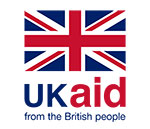The GSMA Mobile for Humanitarian Innovation Fund aims to promote innovation in the use of mobile technology to address humanitarian challenges. The first round of the Fund focused on providing support to help to test or scale innovative ideas which support responses to humanitarian emergencies including natural hazard disasters. This blog post shares three key lessons from our project with Nokia Saving Lives (NSL), in partnership with Smart Communications and Philippines Red Cross: Nokia Saving Lives for Philippines Red Cross, Philippines.
NSL received a GSMA grant to work with the Philippine Red Cross (PRC) and Smart Communications (Smart), a local mobile network operator (MNO) in the Philippines, to establish and pilot the NSL technical solution. The NSL solution consists of drones, a portable data centre and a mobile broadband network which enables applications such as live video streaming, mapping and analytics for emergency response teams.
The intention of the NSL project was to develop a system that in the event of a disaster could be deployed by a fully trained NSL-volunteer group as part of PRC’s local emergency response portfolio. NSL enables first responders to collect data through LTE connected, unmanned aerial vehicles (UAVs) with real-time applications including video streaming, gas sensing, mapping and search and rescue analytics. Smart provided a portable mobile broadband network to ensure reliable and secure communication between the rescue team members, drones and other equipment, which can be particularly useful when mobile networks might not be working.
During the grant period the NSL solution was deployed on three occasions. Twenty-five Nokia employees with special NSL expertise were trained as PRC responders, and an estimated 10,170 individuals were reached through response activities.
Lessons:
1. NSL helped rescuers provide a faster and more informed response to disasters
Live deployments of the NSL system showed that assessing multiple sites from one remote hub reduced the time taken to collect and analyse the preliminary data needed to plan as well as undertake response efforts. The system also addressed the issue of loss of connectivity after a disaster; during the pilot NSL responders reported improved communications as well as overall satisfaction with the tools available to them. Following the Porac earthquake in 2019 NSL technology was used by the PRC to help evaluate the surrounding buildings and infrastructure to assess the overall situation. The UAV‘s cameras provided a unique point of view and enabled the PRC team to identify damage and detect potential hazards not visible from the ground.
2. Navigating local policies and regulations is essential when trailing early-stage innovations
The regulatory environment can play a key role in supporting or hindering innovative programming so it is important to understand local policies and regulations before planning pilot implementation. The NSL team faced a number of obstacles that needed to be overcome before the project could be launched including cumbersome import and export process for hardware, a constantly shifting regulatory environment for the day-to-day use of drones, as well as the need for specific government authorisation for the use of spectrum by drones. Although piloting in the Philippines proved difficult it taught the NSL team valuable lessons that may be useful when adapting and deploying the solution in other similarly challenging markets.
3. Ongoing availability of experts is essential for implementing a technical solution
NSL is an innovative technology solution that relies as much on its equipment as the technical expertise needed to operate it. Emergency support services in the Philippines are mostly voluntary which can be difficult to manage when specific ongoing experience is required. One-off trainings cannot provide the knowledge and skills needed for activities such as drone piloting, networking or data analysis and may be forgotten if not practiced regularly. More than 25 Nokia employees with specific NSL technical expertise were trained as PRC volunteers. Regular training and drills ensured that they not only had appropriate safety training and disaster management knowledge but also the hands on experience needed to deploy the NSL solution in an emergency situation.
The Future:
Following completion of the grant project, PRC incorporated Nokia Saving Lives into their go-to toolkit for search and rescue activities for an initial period of 12 months. Due to unrelated business decisions, Nokia no longer have the same R&D presence in the Philippines, meaning the NSL solution is no longer operational in-country. Nokia have however incorporated the solution into their commercial private wireless offering for clients undertaking demanding search and rescue activities. The technology underpinning the NSL solution is now being used around the world in disaster resilience contexts, including as part of the Sendai City Tsunami Warning System in Japan, Fire Departments in Belgium as well as in infrastructure, utilities and public safety projects such as the New York Power Authority.
Read about these lessons in more depth, and all of the outcomes of our funded project with Nokia Saving Lives by downloading the grant case study, and reading our report on all of the round one grantees. If you want to learn more about Nokia Savings Lives, you can visit their website. Nokia is a signatory of the GSMA Humanitarian Connectivity Charter.
Find out about all of our Mobile for Humanitarian Innovation Fund grantees by visiting our interactive map, with detailed project information



